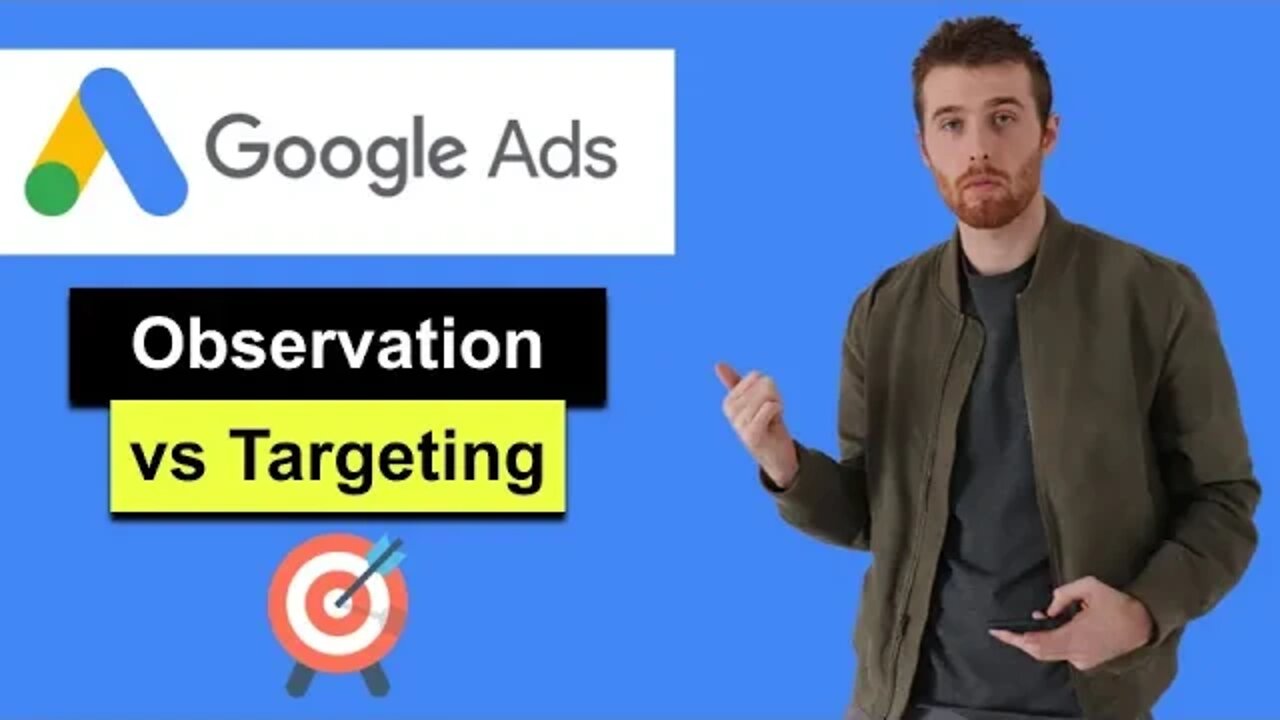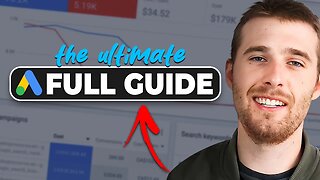Premium Only Content

Observation vs Targeting Google Ads (2022) - Understanding Observation Mode & Audience Targeting
In this video, observation vs targeting google ads I will go over Observation Mode & Audience Targeting in google ads. I will also explain what audience segments are and how to use them in your google ads campaign for better results in 2022.
0:00 Intro
0:13 How To Select Observation & Targeting Mode In Google Ads
0:52 The Difference Between Targeting & Observation Mode
2:16 Viewing & Adjusting Current Audience Segments
3:34 Gameplan For Observation & Targeting Mode
3:58 Sponsor
Our Links (templates, services, courses, and more) https://linktr.ee/tradesmandigitalmarketing
bout "Targeting" and "Observation" settings
There are a variety of campaign and ad group targeting methods available to help you reach potential customers. You can target your ads by choosing criteria, such as audiences you’d like to reach or content you’d like ads to appear on.
In some cases, you may want to observe how ads perform when a customer matches specific criteria, yet you may not want to restrict your ads to only show with that criteria. The “Observation” feature allows you to monitor and set custom bids for criteria without restricting your reach.
This article explains how targeting and observation settings work. For step-by-step instructions on setting up this feature, see Select targeting and observation.
About the "Targeting" setting
When you’re using the “Targeting” setting for your campaigns or ad groups (like affinity audiences, placements or remarketing), you’re telling Google Ads who you’d like to reach with your ads or where you’d like your ads to show on the internet.
For Display campaigns, if you don’t add a targeting method to an ad group, the only restrictions to where your ads can show are in the campaign and account settings, such as content exclusions, locations, and languages. This means your ads can run anywhere on the web, across the Display Network and YouTube, within your campaign and account settings.
When to use it
Use the “Targeting” setting in your ad groups or campaigns, when you want to narrow your ad group to only show to specific audiences or on specific content you’ve selected. Targeting is recommended for all advertisers in their Display campaigns.
About the "Observation" setting
When you use the "Observation" setting, the reach of your campaign or ad group isn’t affected. In other words, the "Observation" setting won’t change who can see your ads or where they can show. However, the "Observation" setting allows you to monitor how ads are performing for your selected placements, topics, or audiences while your campaign is running. Note that "observation" shows you how additional criteria perform when they fall within the scope of your existing targeting.
You can then use this data to guide further actions in your campaign, such as making bid adjustments on certain criteria. You could also decide to create new ad groups with targeting criteria based on your observations.
You can apply the "Observation" setting by going to the “Edit all targeting” page. You can also add an observation method from that method’s reporting page, if that method isn’t used for targeting in the ad group. Note: You can’t add an observation method when you first create an ad group.
When to use it
Use the "Observation" setting if you don’t want to narrow your campaign’s or ad group’s targeting any further, but you want to monitor how certain criteria perform with your ads. The "Observation" setting is recommended for all Search campaigns as well as the Display campaigns of more advanced advertisers.
For campaigns that use Smart Bidding, first-party audience segments added under the “Observation” setting will be used as signals for Smart Bidding strategies. Learn more about audience targeting
-
 14:02
14:02
Tradesman Digital Marketing
2 years agoIf I Were Starting A Google Ads Account In 2023, This is What I'd Do (7 Steps)
65 -
 DVR
DVR
Kim Iversen
2 hours agoAn Islamist Socialist in NYC? The Panic Is Epic | Neocons To Tucker: 'Love Israel OR ELSE'
15.6K65 -
 LIVE
LIVE
MattMorseTV
1 hour ago🔴Election Day LIVE COVERAGE.🔴
1,313 watching -
 1:05:56
1:05:56
vivafrei
2 hours agoComey Doubles Down, Prosecution Doubles Up! Election Day Madness! Boasberg Impeachment & MORE!
21.2K6 -
 LIVE
LIVE
SpartakusLIVE
1 hour agoNEW Meta = EPIC WINS on Battlefield 6 - REDSEC
116 watching -
 DVR
DVR
StoneMountain64
4 hours agoBattlefield REDSEC leveling guns for attachments
29.6K1 -
 26:19
26:19
Liberty Hangout
4 days agoAnti-Trumpers Make Up Bizarre Theories
9.16K27 -
 LIVE
LIVE
GritsGG
5 hours agoWorld Record Win Streak Attempt! #1 Most Wins 3880+!
42 watching -
 LIVE
LIVE
The Rabble Wrangler
15 hours agoBattlefield with The Best in the West
67 watching -
 13:56
13:56
Cash Jordan
2 hours ago"OPEN BORDERS" Mob BATTERS Portland Jail… 'COMBAT' Marines DEFY Judge, BREAK BONES
4.92K7